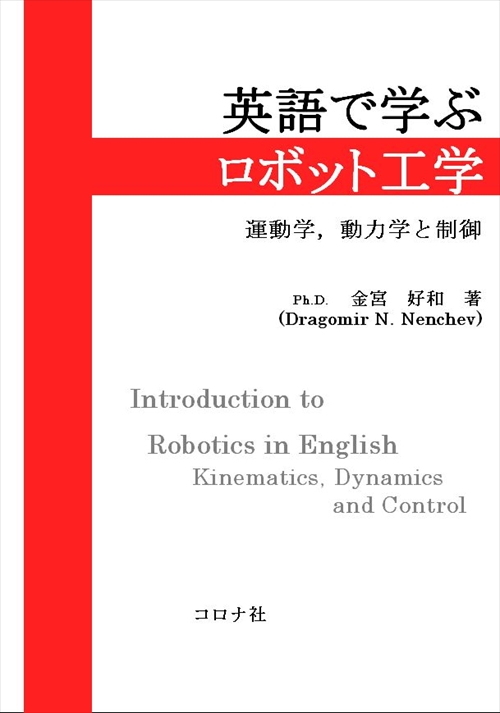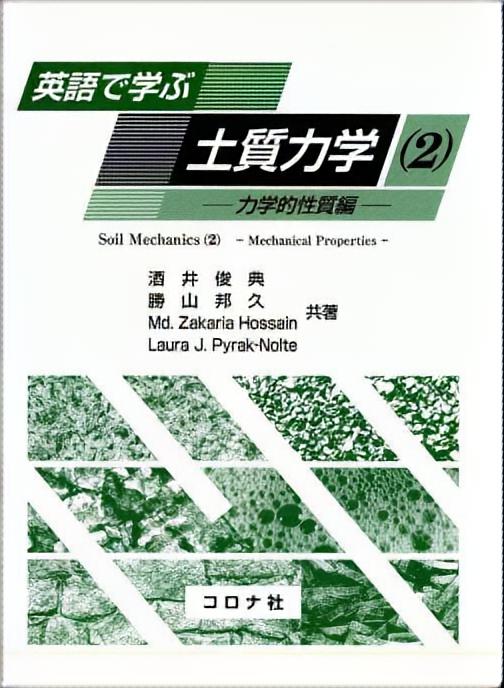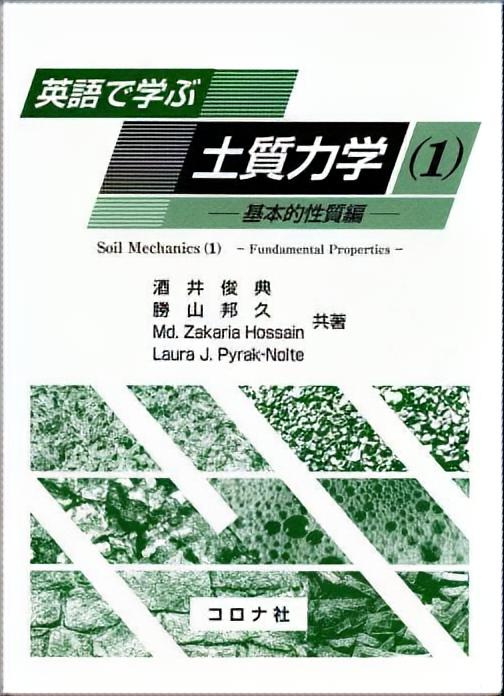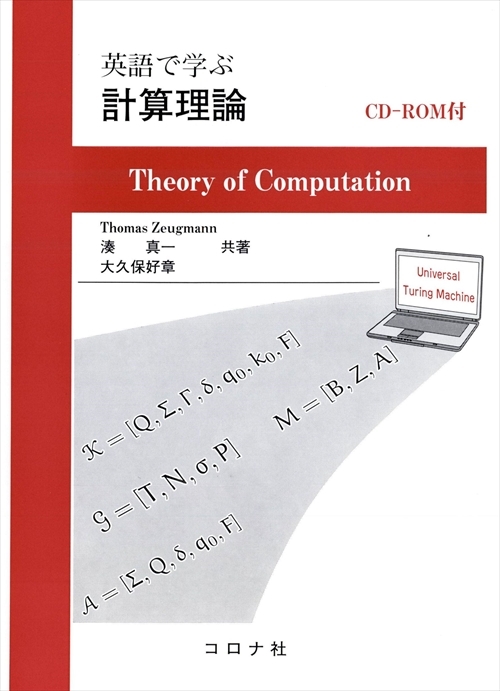
英語で学ぶロボット工学 - 運動学,動力学と制御 -
本書は日本人学生をおもな対象とした,英語で学ぶロボット工学入門書である。基礎理論と制御についてまとめており,各章には演習問題を設けた。また,本文中の初出の技術用語には日本語訳を付記し,巻末にも用語索引を用意した。
- 発行年月日
- 2008/03/07
- 判型
- A5
- ページ数
- 204ページ
- ISBN
- 978-4-339-04588-8
- 内容紹介
- 目次
- レビュー
一部を除き全編英語表記で日本語訳は付属していません。
本書は日本人学生をおもな対象とした,英語で学ぶロボット工学入門書である。基礎理論と制御についてまとめており,各章には演習問題を設けた。また,本文中の初出の技術用語には日本語訳を付記し,巻末にも用語索引を用意した。
1. Introduction
1.1 Robot Limbs
1.1.1 Links
1.1.2 Joints
1.2 Kinematic Structure of the Human Arm
1.3 Subchains for Position and for Orientation
1.4 Kinematic Structure of a Humanoid Robot
Problems
2. Rotational Kinematics
2.1 Coordinate Frames
2.2 Rotation Matrix
2.2.1 Principal rotations
2.2.2 Coordinate transform
2.2.3 Rotation of a vector
2.2.4 Composition of rotations
2.3 Euler Angles
2.3.1 The ZYZ Euler angles
2.3.2 Roll-pitch-yaw angles
2.4 Euler Axis/Angle
2.5 Euler Parameters or Quaternion
2.6 Inverse Problems for Orientation
2.6.1 Euler axis/angle
2.6.2 Euler parameters
2.6.3 Euler angles
2.7 Angular Velocity
2.7.1 Angular velocity
2.7.2 Using the angular velocity
2.8 The State of a Rotating Body
2.8.1 Angular velocity and Euler angles
2.8.2 Angular velocity and axis/angle parameters
2.8.3 Angular velocity and quaternions
Problems
3. Forward Kinematics
3.1 Rigid Body Motion in Space
3.2 Composition of Rigid Body Motions
3.3 The Homogeneous Transform
3.4 Attaching Coordinate Frames to the Links
3.4.1 Intermittent links
3.4.2 Special cases of joint axes orientation
3.4.3 Coordinate frames of the base and the end-link
3.5 Examples
3.5.1 Planar 3R manipulator
3.5.2 3R spherical mechanism
3.5.3 3R articulated positioning subchain
3.5.4 Cylindrical manipulator
3.5.5 7R manipulator (S?R?S manipulator)
3.6 Forward Kinematics for Position/Orientation
3.6.1 Homogeneous transform between neighboring link frames
3.6.2 Examples
3.7 Forward Kinematics for Velocities
3.8 The Jacobian Matrix
3.8.1 Examples
3.8.2 Special structure of the Jacobian
3.9 Statics
3.9.1 Spatial velocity and spatial force
3.9.2 Dual spaces
Problems
4. Inverse Kinematics
4.1 Inverse Kinematics for Position/Orientation
4.1.1 6R manipulator with spherical wrist
4.1.2 7R manipulator and its selfmotion
4.2 Inverse Kinematics for the Velocities
4.2.1 The 6R manipulator example revisited
4.2.2 Singular configurations
4.3 Kinematic Redundancy
4.3.1 Inverse kinematics for the velocities
4.3.2 Null space and generalized inverse of a matrix
4.3.3 Pseudoinverse of a matrix
4.3.4 Planar 3R manipulator example
4.4 More about Kinematic Singularities
4.4.1 Planar 2R manipulator example
Problems
5. Robot Dynamics
5.1 Equation of Motion of a Rigid Body
5.1.1 Momentum and angular momentum
5.1.2 Inertia matrix properties
5.1.3 Newton-Euler equations
5.1.4 Dynamic parameters of a rigid body
5.2 Equation of Motion of a Robot
5.3 Euler-Lagrange Formulation
5.4 Newton-Euler Formulation
5.4.1 Velocities and accelerations of three bodies
5.4.2 Link velocities and accelerations
5.4.3 Link forces and moments
Problems
6. Motion Control and Trajectory Generation
6.1 Motion Control Tasks
6.1.1 Noncontact control tasks
6.1.2 Contact motion control tasks
6.2 Error Based Control
6.2.1 Types of control errors
6.2.2 Model complexity
6.3 Joint-Space Controllers
6.3.1 Decoupled joint-space controllers
6.3.2 PD controller with gravity compensation
6.3.3 Dynamic controllers
6.4 Workspace Controllers
6.4.1 Errors in position and orientation
6.4.2 Jacobian transpose controller
6.4.3 Inverse Jacobian controller
6.4.4 Resolved acceleration controller
6.5 Control of Kinematically Redundant Robot Limbs
6.6 Trajectory Generation
6.6.1 Trajectory generation for PTP tasks
6.6.2 Trajectory generation for CP tasks
6.7 Contact Motion Control Tasks
6.7.1 Reaction type controllers
6.7.2 Action type controllers
Problems
Appendix
A.1 Using the vector cross product operator
A.2 Tripple vector cross product representation
A.3 Rules for atan2
References
Answers to Problems
Index



















